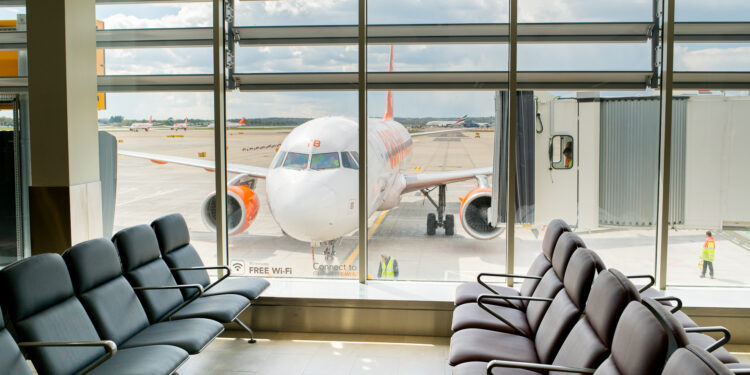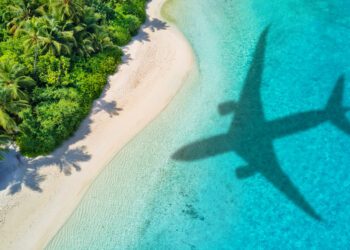COVID-19 has had a major effect on Travel & Tourism, leading to financial losses of almost US$4.5 trillion and a loss of more than 62 million jobs. But there are signs that the sector is beginning to recover, with global travel spending on the rise.
However, the road to recovery will be a long and winding one, given the likelihood that COVID-19 will become endemic. Experts, including the World Health Organization (WHO), predict that the pandemic will not end with the virus disappearing, but rather that the virus will persist, albeit with decreased potency over time. In this context, the Travel & Tourism sector may need to contend with shifts in international travel restrictions which could last for several years.
The research underpinning this article makes it clear that the sector’s recovery will be heavily influenced by vaccine rollouts and virus management strategies. To date, these have varied globally. There remains a highly uneven rollout of vaccines, and this large variation will influence how quickly travel rebounds. There may be high variability in the degree to which governments adopt different strategies, including travel restrictions, to contain COVID-19.
Moreover, government decisions and actions to protect their citizens regarding healthcare considerations and travel policies will continue to have a significant and immediate effect on Travel & Tourism. Policy shifts may also disproportionately affect certain markets that depend on international travel.
WTTC Adapting To Endemic Covid-19: The Outlook For Business Travel 3 Executive Summary
Within these broader trends, the sector has experienced significant changes over the past 18 months, particularly
in demand, supply, and the overall operating environment that affect business travel:
• Demand. Business travel has been slower to recover than the leisure travel segment. Furthermore, corporate policies continue to influence business travel demand and vary across regions according to organizational needs and national restrictions in both departure and destination locations.
• Supply. The sector experienced rapid changes in operations as the pandemic hastened the move to digital, with businesses adjusting their operating models and expanding their technology for service operations. With the increasing digitisation of the business world, hybrid events have become a new paradigm for business and
technology-supported formats now enhance in-person activities. Simultaneously, the sector is facing a talent risk and a considerable labour-shortage crisis resulting from Travel & Tourism businesses laying off millions of workers globally – many of whom have since reskilled or pivoted careers and thus are not available for rehire.
This sector-wide issue has implications for business travel providers that may need to upskill staff to provide the levels of service that business travellers expect.
• Operating environment. Clarity around rules, policies and regulations is now more important than ever.
Certainty and consistency regarding rules and procedures are now key considerations for business and leisure travellers alike. More broadly, the market remains fragmented, with a high share of small and medium-sized businesses. This means the risk of business closures will persist and smaller enterprises may need long-term
support.
Looking ahead, it is likely that business travel recovery will vary by region, country, and industry. Business travel may return faster in Asia than in many European and American markets, with recovery possibly taking place in phases depending on dominant industry sectors. Given spending patterns over the past year, industries such as manufacturing, pharmaceuticals and construction are early adopters of a return to business travel.
Given the significant disruption to the business travel segment, and its uneven recovery to date, business travel recovery will likely be bumpy. However, in the interim, there are opportunities for Travel & Tourism stakeholders to look to domestic and leisure markets to stimulate growth and aid recovery. For instance, business travel providers looking for resilient growth, largely in domestic markets in the short-term, could consider ways to find new clients and diversify geographies. They could also adjust their revenue model by providing additional services and improve the digital services on offer.
Finally, all stakeholders have a role to play in Travel & Tourism’s recovery and can collaborate to help the sector take advantage of opportunities in the leisure and domestic markets, stimulate business travel, and expand to new countries of origin. Governments are the key decision makers around international mobility restrictions which continue to have a direct effect on business travel. Destination management organisations could assist ministries and healthcare entities to disseminate official information on travel health and safety guidelines, taking care to ensure transparency across the sector and clear communication lines with all stakeholders. Governments could also play a role in offering support to travel companies and business travel providers, for instance by finding ways to help small businesses digitise operations or reskill staff. Companies can also play a role in stimulating business travel demand.
WTTC ADAPTING TO ENDEMIC COVID-19: THE OUTLOOK FOR BUSINESS TRAVEL
IN CONTEXT
Global travel-related spending declined significantly from 2019 to 2020. As a result of COVID-19 and the ongoing restrictions to international mobility, the Travel & Tourism sector suffered losses of almost US$4.5 trillion, and more than 62 million people lost their jobs. Domestic visitor spending decreased by 45 percent, while international visitor spending fell by an unprecedented 69.4 percent.
But there are signs of recovery. According to WTTC’s latest research, following a 61 percent decline in 2020, global business travel spending is expected to rise by 26 percent this year and by 34 percent in 2022, implying a recovery to 66 percent compared to 2019.
In a few regions, business spending growth is set to be faster than leisure spending this year. Regional projections are as follows:
• In the Americas, business spending is expected to rise by 14 percent this year, and by 35 percent in 2022
• In Asia-Pacific, business spending is set to rise by 32 percent this year, and 41 percent next year
• In Africa, business spending is set to rise by 36 percent this year, slightly stronger than leisure spending at 35 percent, followed by a 23 percent rise next year
• In Europe, business spending is set to rise by 36 percent this year, stronger than leisure spending at 26 percent,
followed by a 28 percent rise next year
• In the Middle East, business spending is set to rise by 49 percent this year, stronger than leisure spending at 36 percent, followed by a 32 percent rise next year
Wttc Adapting To Endemic Covid-19: The Outlook For Business Travel 5
Business Travel In Context
Even though these figures are encouraging, the Travel & Tourism sector as a whole will likely have a bumpy road to recovery. Although lockdowns and restrictions have begun easing in certain parts of the world, it is expected that the effects of COVID-19 will persist, as the World Health Organization (WHO) predicts that COVID-19 will likely become endemic.












